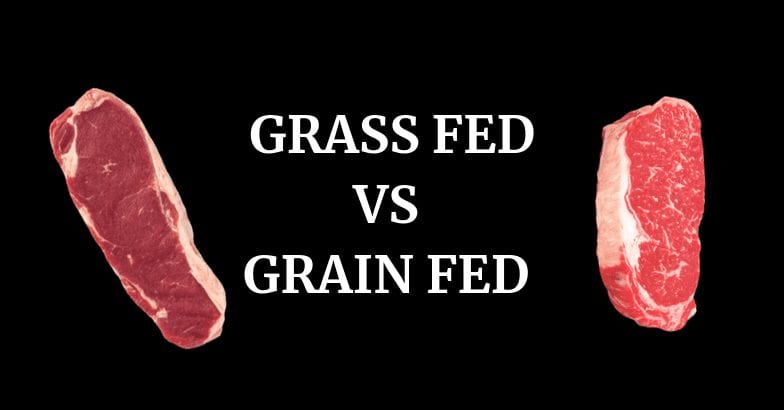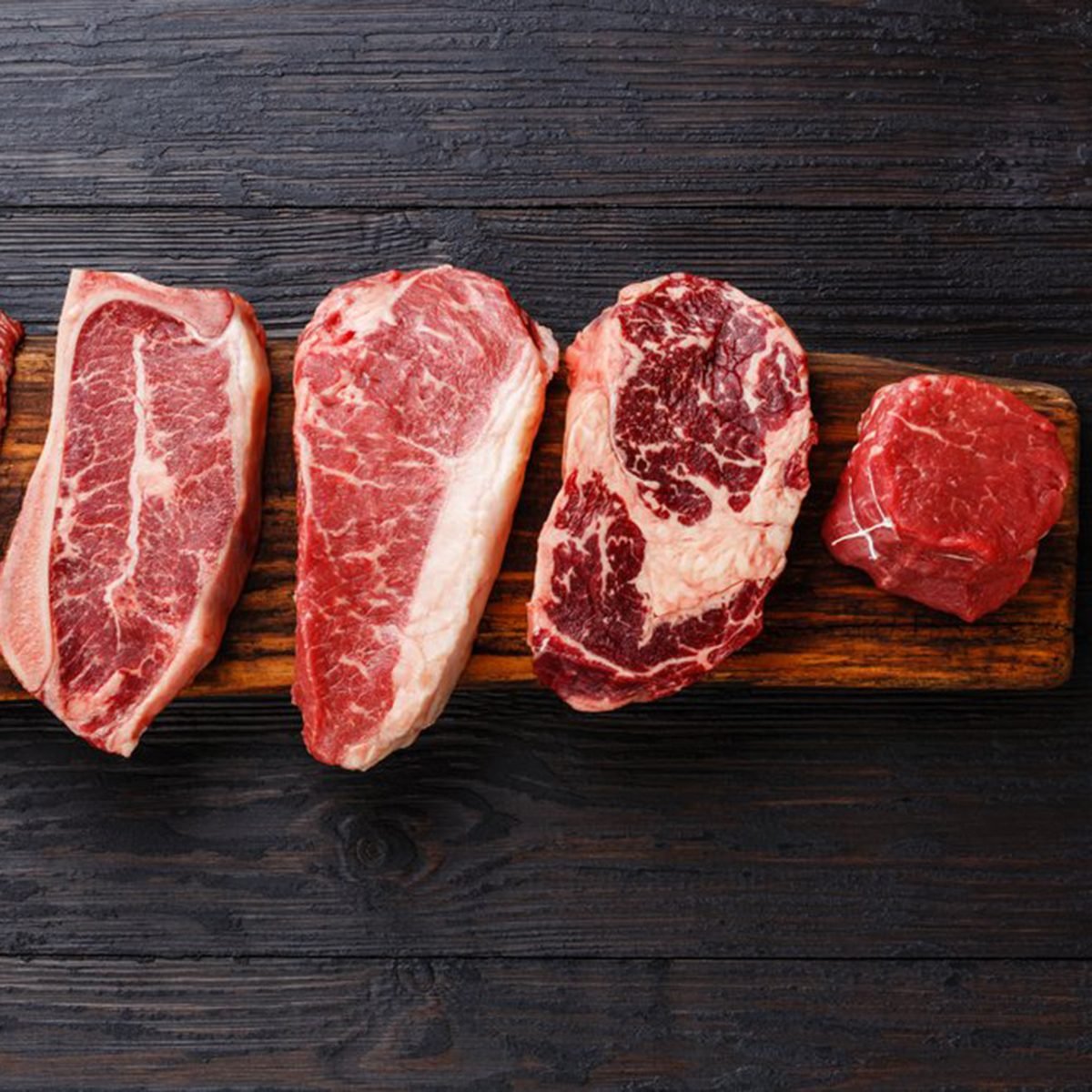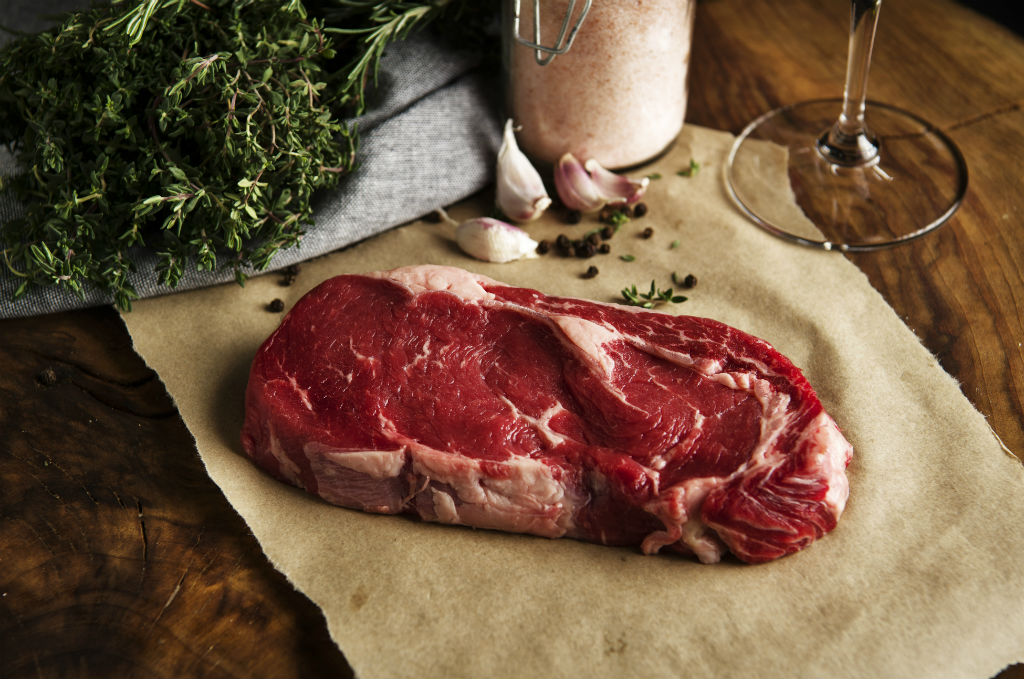Grass Fed Vs Grain Fed
Grass-fed contains more omega-3 fatty acids so it does have a higher nutritional value. In other words grass-fed vs grain-fed beef taste depends on what the person prefers.
 Grass Fed Vs Grain Fed Beef What S The Difference Just Cook
Grass Fed Vs Grain Fed Beef What S The Difference Just Cook
This finishing typically takes place in feedlots which do not have to meet the same standards of.

Grass fed vs grain fed. For a lot of passionate beef eaters grass-fed provides a more nuanced and complex flavour profile. Grass feeding definitely does not increase the amount of oleic acid in beef. The same is the case with fat.
- Narrator Today were going to compare and contrast grass-fed beef versus grain-fed beef. Learn what you eat and enjoy a healthier life. Grass-fed beef contains much less monounsaturated fat than grain-fed beef.
The fat in grass-fed beef is also considered to be slightly more yellowish to that of grain-fed beef. But grass-fed beef can give you almost three times as much omega-3 than grain-fed meat which is great for your health. Grain-fed beef is more tender than grass-fed.
Grass-fed beef is leaner than grain-fed beef with less fat per serving. In fact the grain-fed ground beef patty contains nearly the same amount of oleic acid as the tablespoon of canola oil. Generally it has been shown that Americans prefer the sweeter richer taste that grain-fed beef provides as opposed to the gamier taste of grass-fed beef.
Grass- and grain-fed beef contain very similar amounts of omega-6 fatty acids. A big factor in how beef tastes is how it is cooked. The quarter pound ground beef patty from grain-fed cattle contains over 2 grams more oleic acid than ground beef from grass-fed cattle.
In addition the composition of the fatty acids also differs. Grain fed cattle are often confined in small hot muddy and humid living spaces causing the animal to be stressed out throughout their entire life. It also tends to appear a little pinker than grain-fed even at the same level of doneness.
Grass feeding definitely does not increase the amount of oleic acid in beef. Grain-fed beef is more forgiving when it comes to cooking because of its fat content and marbling. 3 That is grass-fed beef is lower in both fat and calories.
For example grass-fed beef is usually leaner than grain-fed beef. Grass-fed beef is lower in monounsaturated fat. Grass-fed beef also contains higher amounts of Vitamin A and E than grain-fed.
It turns out the word majority is pretty vague in that definition. If youre cooking a grass-fed roast keep your thermometer to hand and use the cooking time as a guideline rather than a rule. Conjugated linoleic acid or CLA is a very beneficial fat for you to eat.
Httpsbitly37qL7NL - Here is the knife that Seth uses 99 of the time httpsbitly34QrEXF - Check out our new 6 packs of seasoning. Grass-fed beef cooks faster than grain-fed because of the lack of insulating fat. However its often not as juicy and tender as the fattier grain-fed beef particularly in prime cuts of beef 2.
Tenderness of the meat depends on how long the cattle eat grain. There are also others who consider say grass-fed ground beef to be chewy and gamey but it has its own distinct taste that makes it special over grain-fed beef. While grain-fed beef does consist of CLA you can find that grass-fed meat has nearly twice as much.
This could be because of a lack of control over the pastures and grasses being eaten by the cattle. Often to fatten up cattle before slaughter some grass fed beef farmers will finish their cattle on a diet of grain and corn. Debunking grass fed vs grain fed myths giving you the most up-to-date information existing today.
The bottom line of the question is that grass fed is actually slightly better for you and also for the animal. In fact the grain-fed ground beef patty contains nearly the same amount of oleic acid as the tablespoon of canola oil. However both grass-fed and grain-fed beef contain omega-6 fatty acids which are essential for energy and helpful in treating certain disease symptoms.
While grass fed cattle in theory should be living in an open pasture. The quarter-pound ground beef patty from grain-fed cattle contains over 2g more oleic acid than ground beef from grass-fed cattle. Because of this grass-fed beef is lower in calories per serving than grain-fed beef is 1.
This implies that the feeding of forages either harvested or from pasture occurs from birth to harvest of that animal. Grass-fed beef by definition is the beef from cattle raised solely on grass pasture or other forages.
Beef Lamb The Whole Grass Vs Grain Fed Debate
 Grass Fed Vs Corn Fed Beef What S The Difference
Grass Fed Vs Corn Fed Beef What S The Difference
 Grass Fed Vs Grain Fed Wagyu Beef Youtube
Grass Fed Vs Grain Fed Wagyu Beef Youtube
 Grassfed Beef Vs Grainfed Beef
Grassfed Beef Vs Grainfed Beef
 Grass Fed Versus Grain Fed Beef How Does It Affect The Taste Steak School By Stanbroke
Grass Fed Versus Grain Fed Beef How Does It Affect The Taste Steak School By Stanbroke
 14 Best Wagyu Ideas Wagyu Wagyu Beef Beef
14 Best Wagyu Ideas Wagyu Wagyu Beef Beef
 Grass Fed Vs Grain Fed Beef Enterprise Kitchen Visits Bertie S Butchers Youtube
Grass Fed Vs Grain Fed Beef Enterprise Kitchen Visits Bertie S Butchers Youtube
 Grass Fed Vs Grain Fed By Kim H Cross Issuu
Grass Fed Vs Grain Fed By Kim H Cross Issuu
 Grass Fed Vs Grain Fed Beef 10 Things You Need To Consider
Grass Fed Vs Grain Fed Beef 10 Things You Need To Consider
 Differences Between Grass Fed Grass Finished And Grain Fed Beef
Differences Between Grass Fed Grass Finished And Grain Fed Beef
 Grain Fed Beef Vs Grass Fed Beef Brief Comparison Cordoba Us I Inc
Grain Fed Beef Vs Grass Fed Beef Brief Comparison Cordoba Us I Inc
 The Big Fat Truth About Pasture Raising Cattle Pre
The Big Fat Truth About Pasture Raising Cattle Pre


Comments
Post a Comment